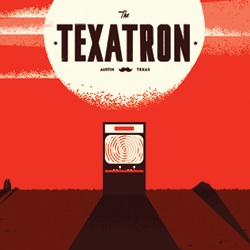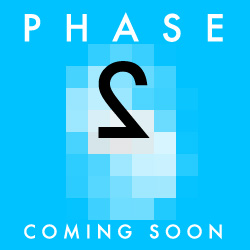GIMME INDIE GAME: THE DEPTH-DEFYING PLANAR-PLATFORMING OF PAPER MOON
There was always a certain — but gentle — cloud that hung over the announcement that Infinite Ammo and Adam Saltsman‘s multi-planar fruit collecting platformer Paper Moon would be brought to Flashbang’s online portal Blurst.
Not one of quality, mind — as players had already been able to get their hands on the game after its Gamma 3D debut — but one of how properly a platformer would fit into the Blurst framework, which relies on three to five minute quick burst arcade play and generally is targeted toward high score competition and achievements.
The subsequent announcement that the game would come with a timer, I will admit, struck a little pang of fear, as I’m not generally one for having my exploration curbed by arbitrary time limits (it’s a cardinal sin up far in the ranks alongside auto-scrolling levels). But, it turns out, that fear was entirely misplaced, and, freshly released at the tail end of last week, Paper Moon is a fantastic addition to the service.
How do you morph a short platformer into a necessarily replayable experience then? The answer is branches: a few handfuls of varied paths that can be taken at several points in the game and require repeat performances to see, and a combo-meter collection system that amplifies your score as you gain the experience to better judge how best to maximize your time in an unbroken line throughout its world.
And it is a game you’ll want to play again back to back, not least because you likely won’t finish it on your first or second or even third go, and even if you do, the tantalizingly missed paths on your map screen will beckon you immediately back through.
If there are any frustrations with the game, it’s only in losing the original’s stereoscopic hook and having to rely on shading to re-orient your next potential leap with the proper paper plane (a few test-run pops also help), but again, repeat plays acclimate you to the process and reduce that end-level/nearly-out-of-time stress.
But what we gained in losing the red-blue shift and going full monochrome, and what’s underscored by Infinite Ammo co-founder Alec Holowka’s new score, is a game that’s roughly and wonderfully the stylistic equivalent of an early silent movie: an easily consumable little tale of derring-do and intrigue that’s essentially peerless in the indie scene today.
Paper Moon home [Blurst, Infinite Ammo]
- The cardboard sea: see Infinite Ammo’s new Paper Moon in motion
- Star power: Infinite Ammo, Flashbang bringing Paper Moon to Blurst …
- Bringing Gamma home to you – Offworld
- Infinite Ammo teases their Marian-ette – Offworld
- The latest look at Infinite Ammo's iPhone puzzler Heroes …
- We could be thrilled: in-depth with Infinite Ammo iPhone puzzler …
- Happy pills: Fez, Aquaria devs collaborating on new iPhone game …
- What have we here: another teaser for Fez/Aquaria devs' iPhone …
See more posts about: Adamatomic, Gimme Indie Game, Infinite Ammo, Offworld Originals






